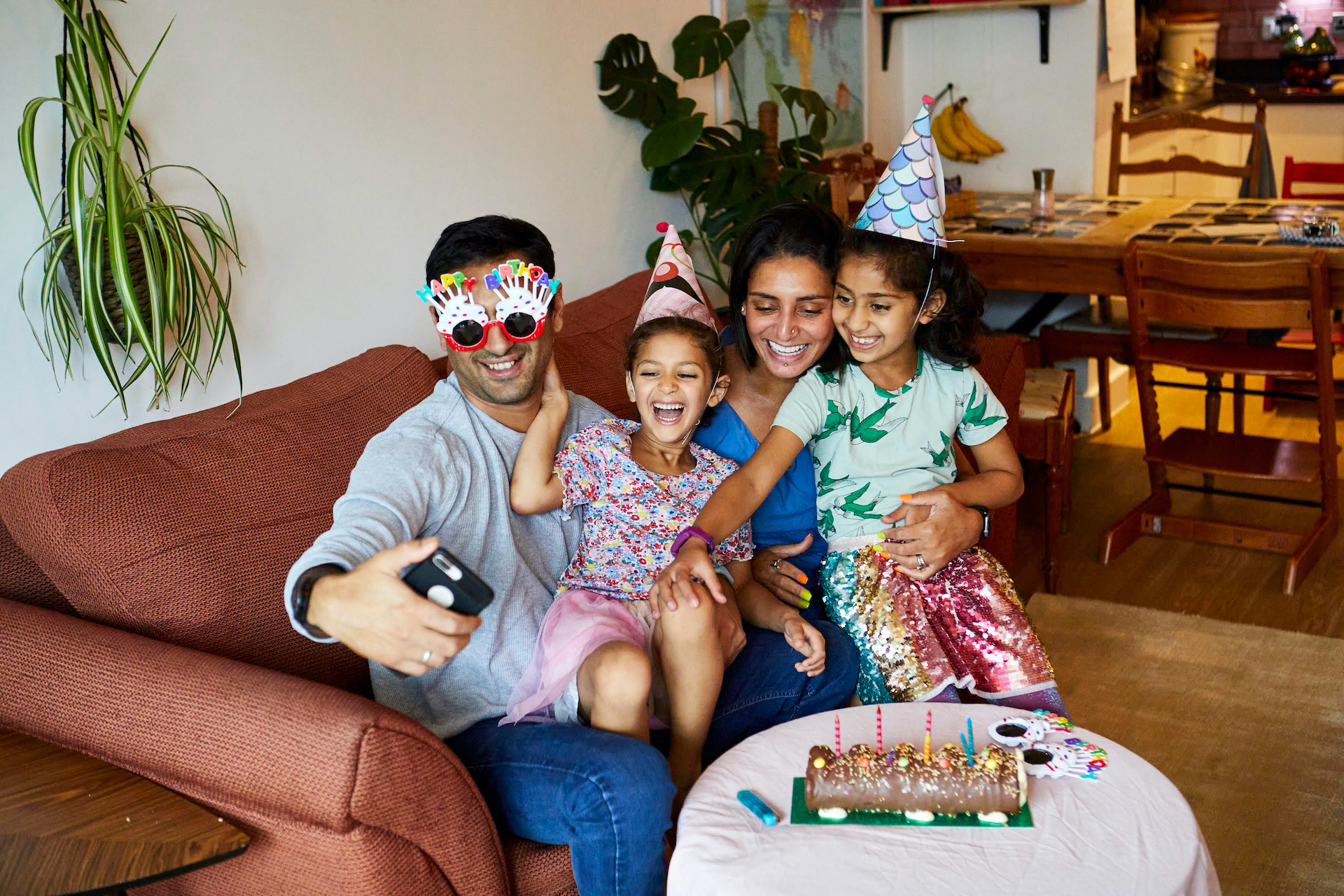The best way to share photos with family and friends
Don’t lose precious photos. Save them and share them with loved ones – for free. Here’s an easy-to-follow guide to sharing and storing photos, plus more about our popular free Dropbox plan.

Who hasn’t been on the receiving end of a huge email file transfer – or an endless group text thread – full of irreplaceable family photos? In the moment, it’s great to see them, but can you find them in six months?
Dropbox to the rescue. We make it easy – with plans that start at $0 – to stay connected with your loved ones for years and years to come. Share folders, photos, videos of your nephew carving the Christmas turkey, and do it all without breaking a sweat.
These days, it couldn’t be easier to keep a digital photo album, whether for your personal or professional needs. Here’s our 101 about the photo storage and sharing options on the market right now.
Best way to share photos

OK, yes, you got us: we’re partial to our own product! We’ve make it simple to upload, organise and share photos and files using cloud storage. Whether they’re holiday snaps or your retirement portfolio, we keep them safe and secure – the virtual version of a fireproof box.
It’s easy to upload photos straight from your phone using our app, and just as simple to share a link with family members – without overwhelming their inboxes.
How to share photos
And yes, you can share full-resolution photos using Dropbox Transfer, a hassle-free one-stop shop for sharing photos without uploading them or using any storage space at all. (No sign-ins!)
You can even share a Dropbox Family plan with up to six people. Everyone has their own space and a shared Family Room folder where family members can store and access shared photos.
Watch our video to see how it works:

Upload & sync photos
Yes, you can do everything but make dinner using Dropbox and our app. Here are some examples:
- Camera uploads: Upload photos automatically to Dropbox from your mobile device. Simply download the Dropbox mobile app to get started.
- Computer uploads: Drag and drop from your computer desktop to your Dropbox.
- Scan old photos: Use the Dropbox doc scanner feature to turn beloved physical photos into digital files using your phone.
Organise & Store Photos
We also make it easy to stay organised despite even the most cluttered computer. Here’s how:
- Thumbnail previews allow you to scan for the faces you want to see.
- Dropbox Professional users can search images based on their content. (For example, search images of ‘mountains’, even if it isn't in the file name.)
- Keep photos and folders secure with a personalised password.
- Searchable hashtags help keep photos organised.
How much space do I get?
Dropbox users get 2 GB storage space in a free account, with paid plans such as Dropbox Family offering even more space and sharing features.

Other photo-sharing options:
We like:
Known as ‘Insta’ among many of its fans, this social network – like TikTok – is more ideal for sharing photos in real time with a real, virtual audience. Think: events. Its fluid, easy-to-use interface is absorbing and, yes, habit-forming. If you want to update family or friends with a daily selfie in ‘real-time’, Instagram is a great choice. You can edit images in-app and set privacy features as need be.
We don’t like:
Of course, because it’s a social media platform, only people with an Instagram account can access your photos, and you can’t easily upload photos from your desktop computer. It’s also not ideal from a privacy perspective, so it isn’t great for storage.
Apple Photos
Apple Photos – familiar to iPad, iPhone and Mac users – comes with many features that make it a decent option for Apple users. It also sorts your photos by the day, month and year and stores them to iCloud.
We like:
Its auto tagging, search suggestions and album sharing properties.
We don’t like:
We’re obviously biased, but we don’t love the facial recognition properties; Apple Photos can identify folks in your photos, which has drawn some criticism from privacy proponents. Additionally, Apple Photos is only available to Mac/iOs users. Photos taken from a non-Apple device need to be transferred. (By comparison, Dropbox is available as an app on iOS and Android, as well as on desktop for both PC and Mac.)
Google Photos
If you have a Gmail account, you already have access to a personal Google Photos account. Some Android phones may come with the Google Photos app pre-installed.
We like:
Google’s automatic tagging feature – labelling holiday pictures with terms like ‘pool’ – can be nice, and we like the auto-backup feature (which, ahem, Dropbox also has).
We don’t like:
Ever get a grainy video sent to you? It might have been taken using Google Photos, which compresses some high-resolution videos and photos to save space. It limits photos to 16 megapixels and video to 1080p. That means that if you’re capturing high-resolution photos or 4K video, they’ll likely be compressed to save space. Also, shared album functionality is nice, but we wish it had password protection. And, of course, to use any Google product – like Google Drive – friends have to sign up for a Google account.
Amazon Photos
We like:
Amazon Photos offers unlimited storage – online – of images, and up to 5 GB of video storage, exclusively for Amazon Prime member. Amazon will tag your photos – for better or for worse – and sync across devices.
We don’t like:
In 2023, as of this writing, Amazon Prime costs a cool $139 annually. It doesn’t have photo storage options for non-Prime users.

Flickr
We like:
Flickr hit the photo-sharing market in 2004, and enjoyed a heyday among professional photographers. They appreciated its community-building aspect and the ability to share feedback on one another’s work. Despite being eclipsed by social media platforms, Flickr remains a solid option for showcasing professional work.
We don’t like:
Flickr limits a free account to 1,000 photos. Its strength remains in the professional photographer realm. This might be ideal if you want to create a portfolio, but it does mean you have to take a few extra steps to make your files private. We also like the licensing aspects of Flickr – you can select whether your images are free for reuse or not. Though it’s good for networking, Flickr doesn’t make it easy to create a private space for you and others to share photos.
SmugMug
We like:
Professional photographers (and wanna-bes) alike love this site for its unlimited storage and ability to print photos. Each plan comes with a customisable page for your portfolio, plus the ability to display pictures in full-screen mode. It’s also got password protection and decent private sharing, plus a printing service.
We don’t like:
It’s pricey! SmugMug offers three plans—but only a 14-day free trial. As of this writing, annual plans cost $110 to $360. SmugMug could be a good choice for serious photographers, but its cost adds up.
Best photo-sharing option
The only thing worse than having family photos inundating your email inbox is never getting them at all. So pick a storage solution that makes photo sharing a snap. A shared folder on Dropbox makes it easy for anyone in your crew to add photos and share from any web browser, any device—no matter whether they’re an iPhone or Android user.
Remember that you get privacy, tons of space, and free photo storage options at Dropbox. Top-quality storage space, easy sharing options, and a clean desktop on your computer. Life is good.